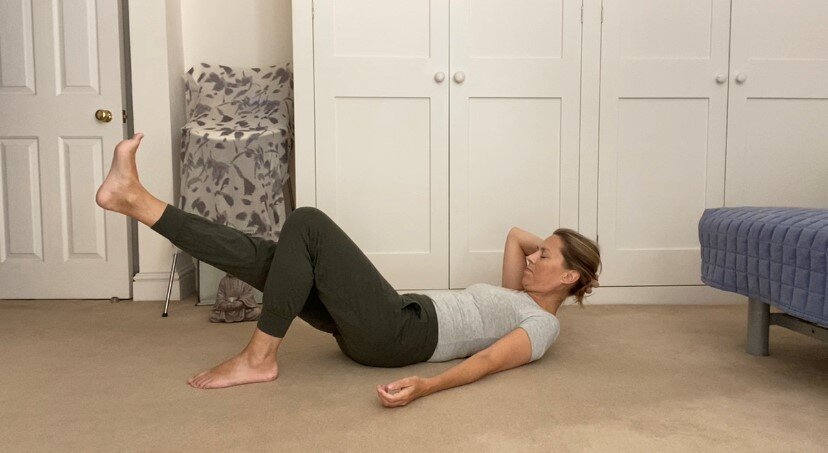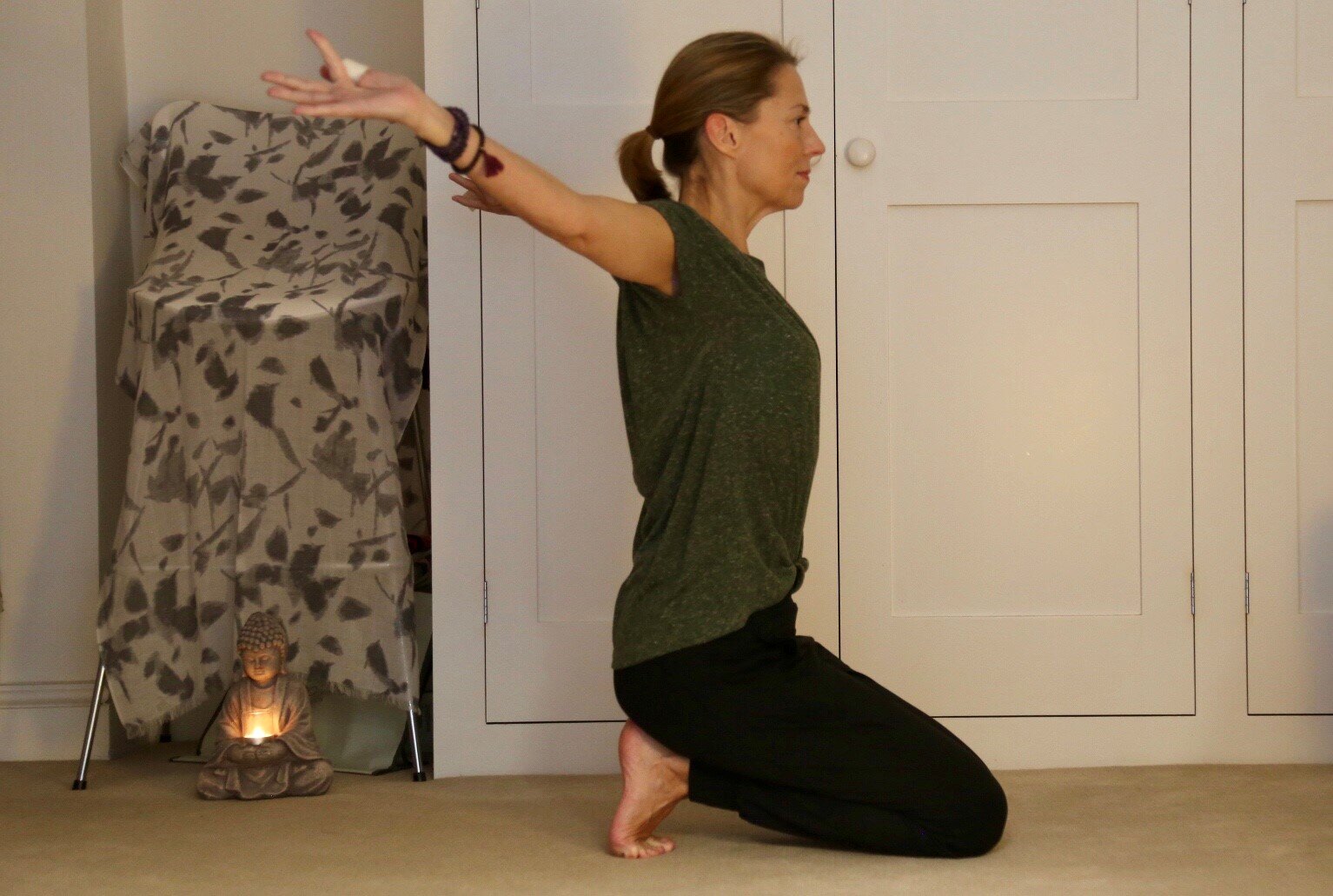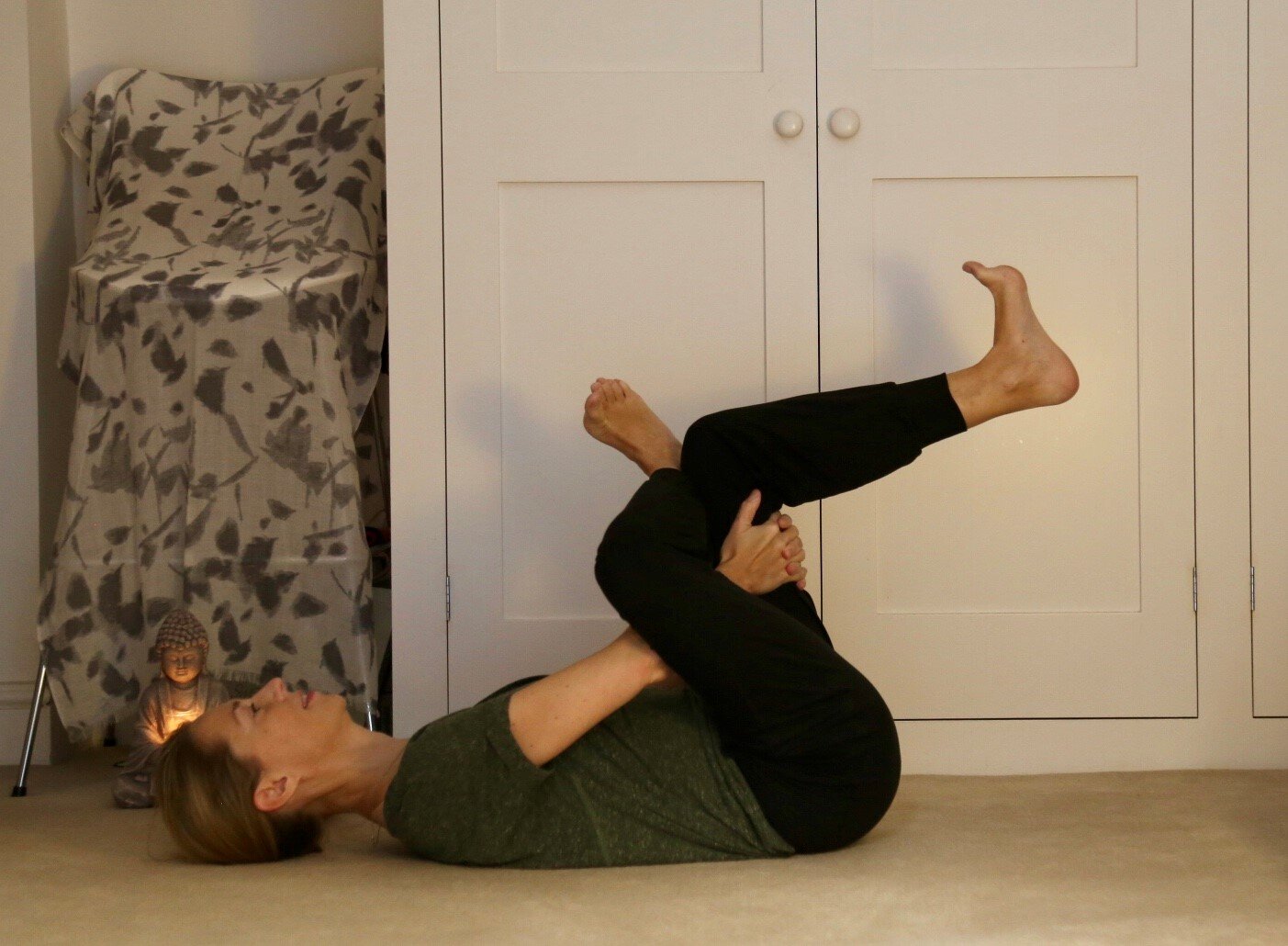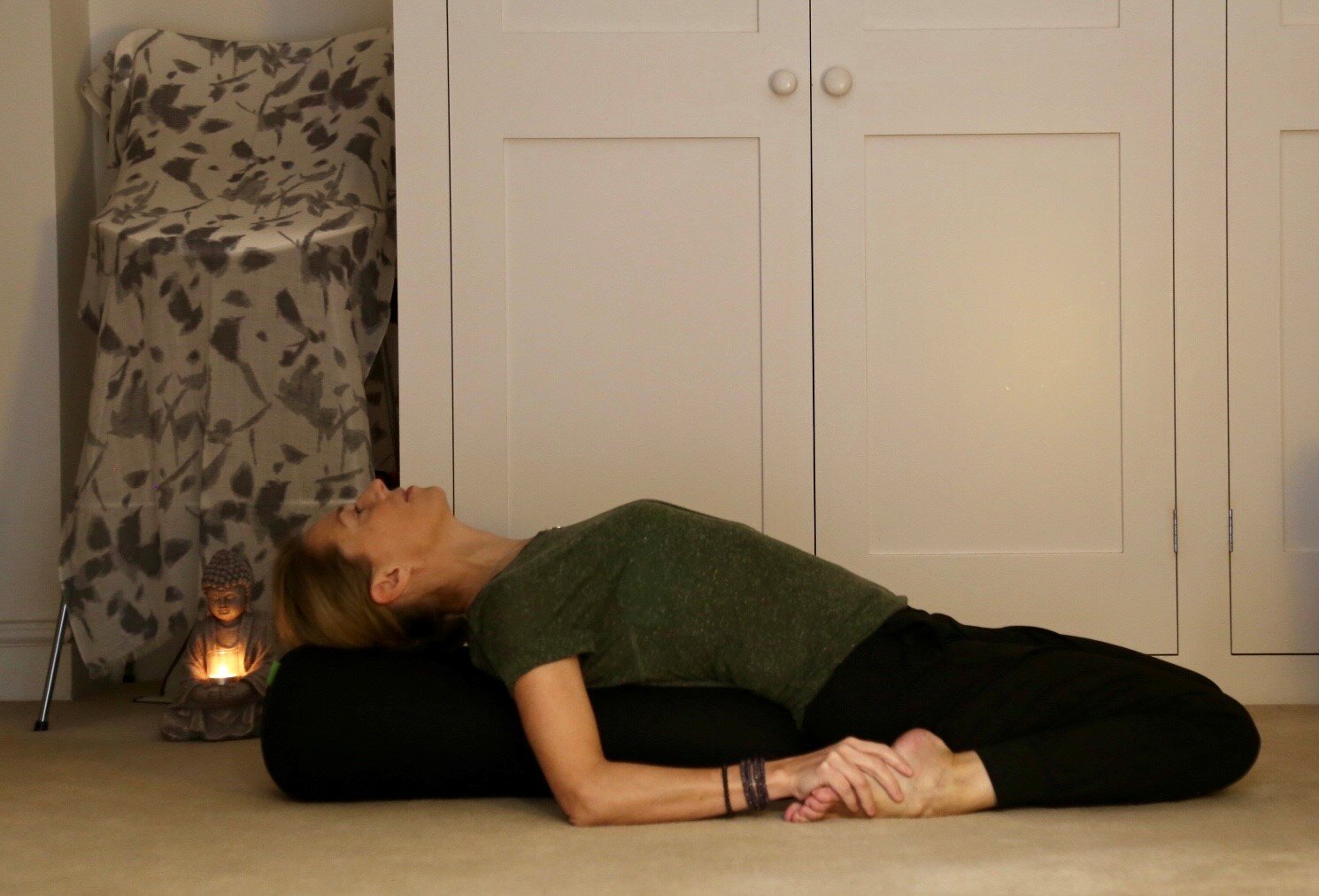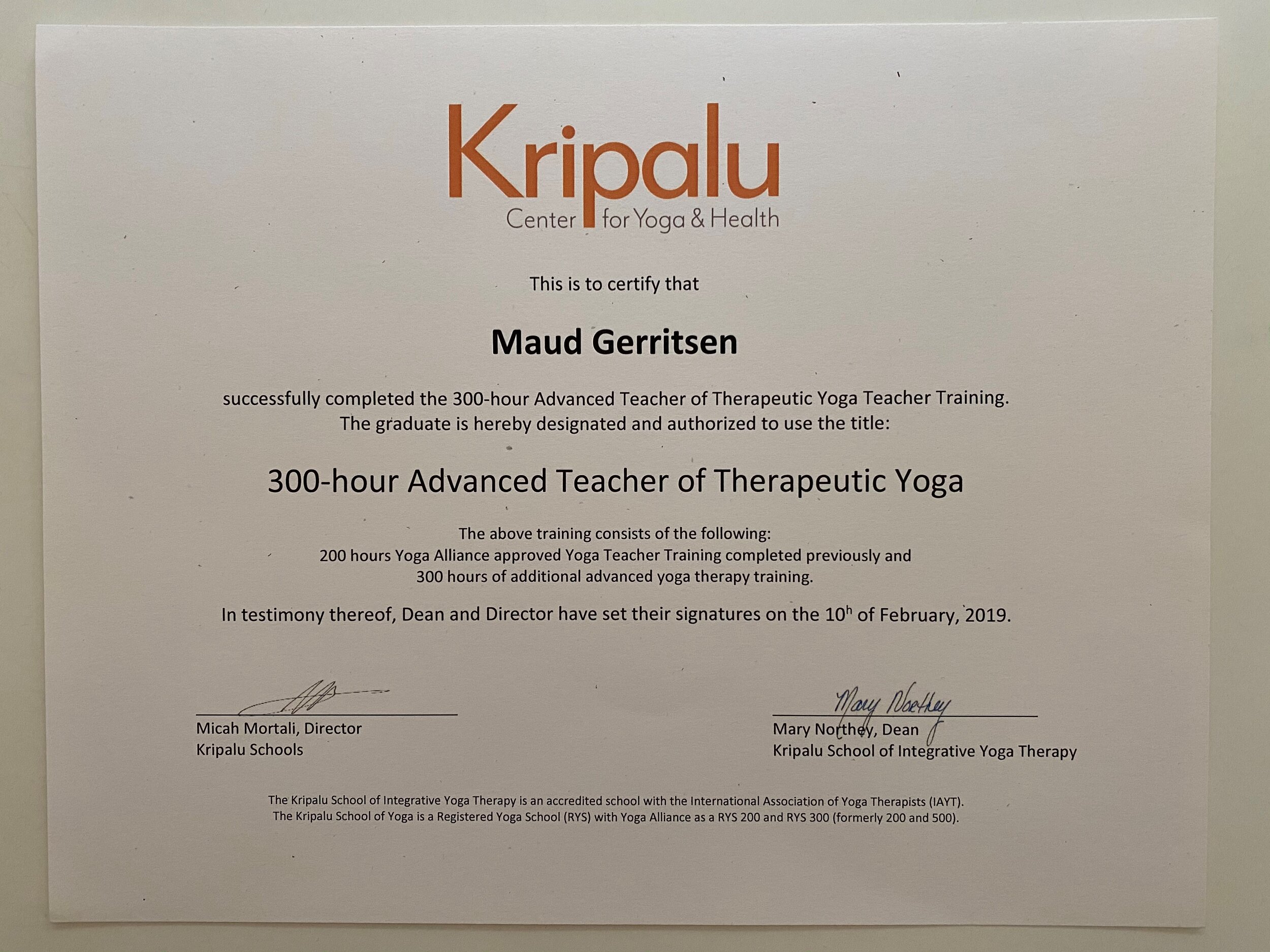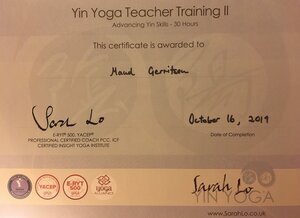“Movement is a medicine
for creating change
in a person’s physical,
emotional
and mental state.”
Movement therapy can be done in combination with manual therapy, or on its own. I currently offer the following movement therapy:
Clinical Somatic Exercises (Somatics) helps to retrain the brain to release contracted muscles patterns,
Therapeutic Yoga provides yogic tools to help the individual find a path towards improved health
I would classify all of these as yoga, as yoga for me is any mindful movement connected with the breath. The two styles of yoga I focus on are Yin Yoga (specifically targeting fascia) and Restorative Yoga.
Clinical somatic exercises
Clinical somatic exercises are an easy, quick and super effective way to restore healthy movement patterns; slow purposeful movements, retraining the brain which can release permanently contracted muscles.
The only commitment is that you practice slow and mindful (rushing will defeat the purpose) for 15-30 minutes every day. The movements are not complex and are all floor based, nothing else needed but a yoga mat or some carpet. Somatics is available to almost everyone… I say almost, because if you are suffering specific pains or issues, perhaps not due to habitual issues, it is advised that you check with your doctor.
“Clinical Somatics changes habitual posture and movement by retraining the nervous system.”
Somatic Education targets the spine and the core muscles, the upper back and neck, and the gluteal and hip-flexor muscles. They include the Iliopsoas muscles which can cause aches and pains if we are seated for long periods of time.
Clinical Somatics teaches:
Understanding of how your posture is impacted by habits
More awareness of your body, your mind and your general wellbeing
How conscious deep breathing can reduce stress
Somatic practices to help fix postural issues such as over-arching, rounding, forward head position, scoliosis and more
Somatic practices to help muscle tightness and tension in neck, back, abdomen and hips, sciatica, frozen shoulder, stress, disc issues and more
I first learned about Somatics whilst studying Intergrative Yoga Therapy at Kripalu, USA and furthered my studies through the Somatic Movement Center.
I am a Clinical Somatic Exercises Instructor, SMC® CEI Level 3.
For more information or to book an appointment, contact me.
Therapeutic Yoga
“Yoga therapy is the process of empowering individuals to progress towards improved health and wellbeing through the application of the teachings and practices of Yoga.”
Because of my own experience with chronic illness and pain, I know first-hand how yoga can be therapeutic offering tools such as movement (flexibility, stability and strength), breathwork, meditation and mindfulness. It was during a difficult period of illness and surgery, that I realised that my yoga practice was aiding my recovery, both physically and mentally. The evidence was so apparent, that for me the only way was to learn more and to share what I learned; I became a yoga teacher. I realised I only scratched the surface of the enormous breadth of material the yoga philosophy had to offer. Studying Integrated Yoga Therapy at Kripalu gave me so such a good base, but also much material to further explore. I haven’t stopped learning since.
Yoga therapy is a wonderful practice, either working individually or in a group setting, using asana, pranayama, yoga nidra, meditation, mantra, mudra, visualisation and much more. Tailoring the practice to the needs of the individual, making it an evolving process of awareness and discovery.
“Yoga teaches that the whole of life is a journey of healing —healing all dimensions of the being— and the end of that journey is freedom within ourselves and unity with the world around us. The job of the yoga therapist is to take this elevated philosophy and communicate it to whoever is in front of them.”
Yin Yoga
Yin yoga targets the connective tissues; ligaments, tendons, fascia and even bones. All these tissues need to be exercised in order to stay healthy. However connective tissues are dryer and less elastic than muscles and need to be exercised in a different way; they require gentle pressure applied for longer periods of time, in order to be stimulated to grow stronger and more flexible. Through our yoga practice we build stability (a Yin quality) and mobility (a Yang quality), the practices very much complement each other.
Yin yoga also targets the fascia which creates an integrating mesh enveloping our bones, muscles and organs and which is most healthy when it’s hydrated. When we have restriction in our body, our fascia becomes dehydrated, stiff, weak and stuck. Yin yoga can restore our fascial fluidity and changes our connective tissue so we can promote relaxation and flexibility.
All yoga is based on the idea that it prepares the body and mind for meditation, but the beauty of Yin yoga is that this next layer -the emotional and spiritual benefits- seem to be easier to access, than in a dynamic yoga class. The postures are held for a longer time, work on energy lines and are taught in combination with mindfulness which makes that body, mind spirit connection easier to create. There is more time and more stillness.
Sequences can be designed to create meridian-specific postures which creating health benefits similar to acupuncture as Yin finds roots in Chinese medicine too. Yin-Yang organ pairs can be targeting to ensure for an optimal flow of Chi - life force/energy- and creating emotional balance. The mindfulness meditation is also developed during the practice, becoming very much aware of the physical body, and its subtle energies. It helps us to reconnect in an age which is increasingly making us disconnected (from others but also from ourselves). It helps us transfer from our headspace, to our heart and belly space or dantian, our energetic centre in the belly.
Yin yoga is a crucial antidote for modern life and will create a harmonious balance in body and mind.
“The truth is that our finest moments are most likely to occur when we are feeling deeply uncomfortable, unhappy, or unfulfilled. For it is only in such moments, propelled by our discomfort, that we are likely to step out of our ruts and start searching for different ways or truer answers”
After I became a RYT-200hr Yoga Teacher in 2016, I studied to become a 300hr Advanced Teacher of Therapeutic Yoga, at Intergrative Yoga Therapy at Kripalu, USA (2018/2019).
I’ve also studied level I (2017) and level II (2019) in Yin Yoga with Sarah Lo (endorsed by Sarah Powers and Certified by the Insight Yoga Institute).
For more information or to book an appointment, contact me.
“It is health that is the real wealth, and not pieces of gold and silver.”







